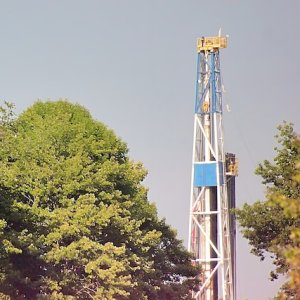
The Year in Review
Since Congress formally approved the Energy Reform in 2013, the authorities have been working on drafting and issuing secondary laws and regulations meant to delineate the path the industry and the country will take. This package includes new legislative mechanisms such as the Hydrocarbons Law, the Law of the Electricity Industry, the Geothermal Energy Law, and new laws outlining the roles and obligations of the State-owned energy companies, CFE and PEMEX. Existing laws were modified to facilitate the enactment of the Energy Reform, including changes to the National Water Law that contemplate the development of geothermal resources, and modifications to the legislations pertaining to public works and foreign investment. As for the electricity industry, the authorities spent most of 2015 working on the Rules of the Wholesale Electricity Market, the document that will shape the way players interact in this sector. Now that the mechanisms are being put in place, it is worth looking at the factors that will shape Mexico’s new energy landscape in the years to come.
EVOLUTION OF DEMAND
The comprehensive restructuring of the electricity industry is designed to meet the increase in demand that CFE will be unable to cover on its own. In 2014, total energy generation in Mexico amounted to 258.25 million MWh. The effective installed capacity in Mexico amounted to 64,278MW, and 25% of this (16,070MW) came from renewable sources. It is expected that demand will increase by more than 3.5% in the next ten years, which calls for the incorporation of an additional 38GW by 2024. The private sector is already seizing the opportunities brought about by the new regulatory framework, as evidenced by the fact that between 2014 and 2015, CRE received 247 requests for generation permits under the self-supply, small power producer, and IPP schemes, as well as exportation and cogeneration permits.

In order to make the National Electricity System more reliable, PRODESEN 2015-2029 plans for the retirement of 127 facilities across 20 states in the next 20 years, equating to 15,840MW. Plants that will be decommissioned are chosen according to efficiency and operation costs, so older facilities are most likely to be taken offline. The geothermal segment will see the decommissioning of 80MW, while the rest will be taken from conventional thermoelectric facilities. According to CFE’s Unit Decommission Program, 465MW were to be taken offline in 2015, but only 39MW of installed capacity were retired in the first half of the year. The delay in the decommissioning of CFE’s generation plant is justified by the need for backup capacity in case of an emergency, such as the possibility of a natural gas shortage. Looking ahead, nine plants are expected to be decommissioned in 2016.
PRICE DEVELOPMENT
CFE’s strategy of replacing expensive, polluting fuels such as fuel oil with cleaner and cheaper natural gas is already having an impact, as evidenced in the reduction of electricity tariffs. In August 2015, tariffs continued to decrease for the eighth consecutive month when compared to the same periods in previous years. For the industrial sector, electricity tariffs decreased between 28-38% in August 2015 in comparison with August 2014. Likewise, tariffs for the commercial sector dropped 12-14%, while the DAC tariff for the residential sector saw an 11.9% decrease. The low-consumption tariff for the residential sector, which has risen by 4% annually since 2006, did not increase in 2015, but rather dropped 2% compared to December 2014.

CFE & PEMEX
A crucial step in opening the market and creating a level playing field was the elimination of the vertical integration of the State-owned enterprises. According to Article 8 of the CFE Law, electricity generation, transmission, distribution, and commercialization, as well as the supply of primary goods for the electricity industry, must be completely separated under strict conditions. In order to comply with these mandates and dismantle its vertical integration, CFE will create several subsidiaries to address each business line. Although the subsidiaries have not yet been formally announced, Pedro Joaquín Coldwell, Minister of Energy, has mentioned on several occasions that there will be generation, transmission, distribution, and commercialization companies operating under the umbrella of the national utility. Other possible divisions could include branches dedicated to smallscale distributed generation and natural gas.
Private companies are responsible for 36% of the country’s electricity generation, but they were not allowed to commercialize electricity in the wholesale market. Under the new framework, PEMEX is also expected to participate in the wholesale market by forming partnerships and selling the surplus energy from its cogeneration processes. Both the CFE Law and the Law of the Electricity Industry make a clear division between regular commercialization activities and basic services. The latter remain exclusive to CFE.
Following the transitory articles of the PEMEX Law, on November 18, 2014, PEMEX’s Board of Directors approved a proposal to transform the company’s four existing subsidiaries into two new subsidiaries. The new companies will have a legal presence, individual budgets, and technical and operational autonomy, although they will be subject to PEMEX’s central management and strategic direction. The first subsidiary is PEMEX Exploration & Production, and it is in charge of carrying out exploration, production, and development activities related to hydrocarbons. The second is PEMEX Industrial Transformation, which will merge the activities, responsibilities, and assets of PEMEX Refining, PEMEX Gas and Basic Petrochemicals, and PEMEX Petrochemicals. In addition to these subsidiaries, the Board of Directors also approved the creation of five new subsidiary branches: PEMEX Drilling and Services, PEMEX Logistics, PEMEX Fertilizers, PEMEX Ethylene, and PEMEX Cogeneration and Services. The latter will utilize the heat and steam generated by the oil company’s industrial processes to generate electricity. This way, it will increase efficiency and operational reliability in productive processes while enabling PEMEX to take advantage of the economic opportunities in the wholesale electricity market. PEMEX has identified a cogeneration potential of 5GW across its different areas.
CENAGAS & CENACE
The measures implemented to facilitate the removal of the monopoly position of the State-owned companies include the creation of two system operators in charge of the transportation infrastructure for electricity and natural gas: CENACE and CENAGAS. Both entities were created by a decree published on August 28, 2014. These are decentralized entities closely linked to the Ministry of Energy, with their own Director General and administrative board.
CENACE, a former division of CFE, is now in charge of administering the National Electricity System, which consists of the country’s generation park, substations, and transmission and distribution lines. It is in charge of planning the operation and expansion of the National Electricity System, ensuring that the cheapest electricity in terms of variable costs is dispatched, interconnecting new generation facilities to the grid, and proposing adjustments and modifications to the rules of the market to CRE, the regulator of the energy industry. In order to help CENACE begin to perform its new duties, CFE transferred the necessary human, economic, and administrative resources to the new system operator.
CENAGAS was entrusted with the management, administration, and operation of the country’s natural gas transportation and storage system, for which it can tender strategic infrastructure projects, as stated in the Hydrocarbons Law. This operator is responsible for ensuring the availability of natural gas in the country. PEMEX is transferring its natural gas pipeline infrastructure to the new system operator, an initiative on which both entities will work together for two years.
CFE AND RENEWABLES
Aligned with CFE’s commitment to the development of renewables, the State-owned company began the operations of two renewable energy power plants in 2015: the Los Azufres III Phase I geothermal plant, in Michoacan, and the Sureste I Phase II wind farm in Oaxaca. These developments have a combined installed capacity of 150MW and required an investment close to US$230 million. In addition, CFE has three more renewable energy projects under construction, the development of which was awarded to three different consortia. These include the Chicoasén II hydroelectric plant in Chiapas, the revamp and modernization of the Temascal hydroelectric plant in Oaxaca, and the Los Humeros III geothermal plant in Puebla. The development of renewables plays a prominent role in CFE’s plans, as there is currently one renewables project undergoing tendering, with nine more expected to be tendered soon. These 15 projects will add close to 2.8GW to the country’s installed capacity and will increase CFE’s renewable energy installed capacity by 20%. The investment needed for these developments is estimated at US$4.8 billion.
FUEL OIL CONSUMPTION
Projects aimed at increasing natural gas availability and the expansion of hydroelectric capacity helped CFE reduce its dependence on fuel oil, decreasing the use of the latter by 45%. CFE went from using 201,000 b/d in 2014 to 111,000 b/d in 2014. With new natural gas pipelines, combined cycle plants, renewable energy projects, and power plant conversions, CFE plans to reduce its fuel oil consumption by 90% by 2018 from the 2012 baseline, going down to 19,000 b/d. The polluting emissions associated with the use of fuel oil for electricity generation will, as a result, decrease by 90%, dropping from 36 million tonnes of CO2 equivalent in 2012 to 3 million tonnes in 2018.
THE WHOLESALE ELECTRICITY MARKET
In February 2015, the Ministry of Energy published the Rules of the Wholesale Electricity Market, a document composed of 19 chapters that details the rights and obligations of participants regarding each product that will be commercialized in this market. These include the trading of electricity and related services, capacity, financial transmission rights, CELs, and other products intrinsic to the National Electricity System. The document also defines the administrative dispositions related to measurements, accounting, and settlements, which are needed to provide certainty to the daily activities of both public and private players. According to the document, CENACE will be in charge of administering and operating the wholesale market; therefore, parties interested in participating as generators, marketers, suppliers, or qualified users must sign contracts with this entity. The rules consider those with consumption needs of at least 3MW to be qualified users, and this subsector can participate in the market by selecting the supplier of their choice. A year after the launch of the market, the requirement will be lowered to 2MW and to 1MW the following year. The rules allow the grouping of several low-consumption users in order to reach the electricity requirements needed to become a qualified user. Generators with a surplus generation of at least 500kW will be able to supply electricity to the market. The fact that the electricity with the lowest variable costs, depending on the fuels and technologies used, will be the first to be dispatched is an incentive for generators to reduce their generation costs, thus fostering competition between participants and ultimately reducing electricity tariffs. This is poised to promote the incorporation of clean energies into the country’s energy matrix. The wholesale electricity market will be launched on January 1, 2016. However, a day-in-advance market will begin on December 31, 2015. The authorities began running several tests and pilot programs in September 2015 to identify areas that need to be improved. The first tenders for electricity and CELs will take place in October of 2015, while tenders for capacity and financial transmission rights will be carried out in 2016. CELs will not be enforced until 2018.
FLAGSHIP PROJECTS
NATURAL GAS
Some of the most emblematic projects for the energy sector that were completed in the past year will be presented throughout this publication. Other developments worth mentioning are included in this section, such as the Tamazunchale-El Sauze natural gas pipeline. This project began operating in November 2014, and it consists of a 230km long pipeline with a 620mcf/d capacity. This pipeline transports natural gas to the states of San Luis Potosi, Hidalgo, and Queretaro, where it supplies fuel for the El Sauz combined cycle plant. TransCanada was responsible for developing this pipeline, which required an investment of US$250 million. Moreover, CFE completed the conversion of the Manzanillo power plant in Colima in December 2014. With an investment totaling US$12 million, the converted plant has an installed capacity of 700MW and receives fuel from the Manzanillo LNG Terminal. CFE also finished converting the Central Puerto Libertad power plant in Sonora, which received natural gas through the Sásabe-Guaymas pipeline. An investment of US$50 million was allocated to this project, and the power station now has an installed capacity of 630MW.


SOLAR
The first stage of EOSOL’s Tai Durango solar park was inaugurated in May 2014. This is the first utility-scale solar development to be interconnected to the National Electricity System, and its first stage consists of 70,000 panels spread out across 32 hectares. The project required investments of US$33.3 million to produce 16.8MW. The second phase of this solar park, known as Las Ánimas, began construction in May 2015. According to the development plans, the park will evolve to accommodate 216,000 panels resting on 100 hectares, reaching an installed capacity of 49.8MW. Once the expansion is completed, Tai Durango will become one of the largest solar parks in the Americas and Durango will become a leading state in renewable energy generation.
WIND
The Energía Eólica del Sur wind farm situated in the community of San Dionisimo del Mar in the Isthmus of Tehuantepec, Oaxaca is Latin America’s largest wind farm, with 132 wind turbines capable of generating 396MW. Requiring an investment of over US$933 million, the project adds to the capacity of the 21 existing wind farms in the region. The municipal wind farm is expected to lower local electricity tariffs by 35%. After ongoing protests from the local indigenous community were resolved, the project was finally authorized in July of this year.
















